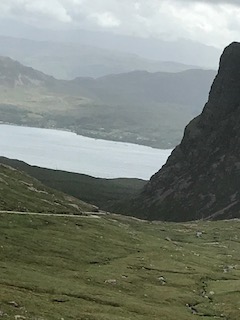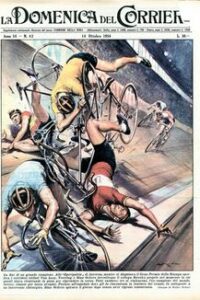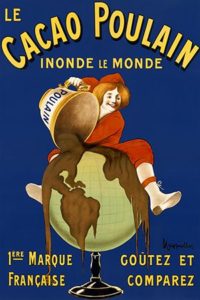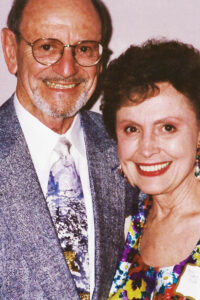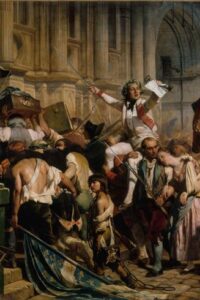My lovely wife Kay has never met a stretch of highway that intimidated her. Regardless of which side of the public thoroughfare a country has chosen to dictate its traffic flow, she has never been concerned with the directional markings painted on the road. Staying inside designated lanes is not a priority: “Too confining,” she argues. This must be her creative nature and outside-of-the-box thinking. Yes, there is a beautiful little rebel inside the heart of my bride.
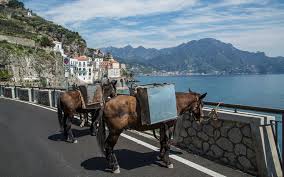
Past Highways of Death include, but are not limited to, the length and breadth of the Amalfi coast. To clarify, the measurement of breadth in the case of this twenty-five mile stretch of coastline in southern Italy barely accommodates two vehicles as the scrapes and dents and broken side-mirrors attested on many of the cars we passed during our excursion in 2012. With the mountains on one side and a three-hundred foot drop into the Mediterranean on the other, the highway is unforgiving, and better to have a dent or two in the side of your vehicle than the alternative. The way many of the drivers use this stretch of highway, the guard railings to prevent a vehicle from plunging into the sea is more for show than for safety. Oh yeah, and then there are the horses; dodging pack horses is an added test to a driver’s skill set.
Then there was the time two years ago in Lyon, France when Kay went the wrong direction on a one-way city street and we faced an approaching street car. She took the only move she had, pulling onto the sidewalk. After the street car passed, she got back on the road and immediately turned our car in the right direction. One must look at the positive, Kay would say: there were no parked cars along the street preventing her from using the sidewalk at that strategic point when she needed to avoid the head-to-head, and “no pedestrians were injured in the making of this move.” She ignored the shocked and terrified faces of said pedestrians or their curses as she righted the car and drove away. It is a wondrous thing to be cursed in a foreign language.
Or the time we were driving through the French Alps to Chamonix when construction work on the main road forced us to take a deviation (French for detour). She was a reckoning force cruising the mountain-pass roads like the latent Indy driver she was, is, and evermore shall be; straightening out the switchbacks and hairpins like an expert, braking into and accelerating out of the curves like a pro. Mind you, this was a secondary road with few guard rails, so one faulty move and we would have sailed into the wild blue yonder.
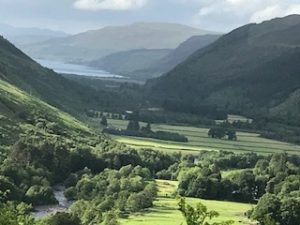
When we travel internationally our roles are well-defined: I the pathfinder and Kay the pilot. This recent trip to Scotland, I grudgingly agreed to a Global Positioning System in our rental car. The GPS is an affront to my keen sense of direction, and I’m Orwellian enough to consider the GPS nothing more than Big Brother; always watching, always knowing my location, and, I’m sure, the inevitable next step for such future technology, will be the knowing of my thoughts. At present, only God knows my thoughts and that is embarrassing enough. However, for this trip I conceded for the sake of marital harmony, and I am humble enough to admit that the GPS proved useful in most cases, which gladdened my wife’s heart. But when we took some off-grid side trips or went to destination points that were not pre-programmed into the system, the GPS went into a state of confusion and became completely unreliable. Who you gonna call? In such moments, I proved my worth as map reader and visual spotter of landscapes, road signs, and all-points compass to get us back on the right path. And yes, I gloated in my few victories.
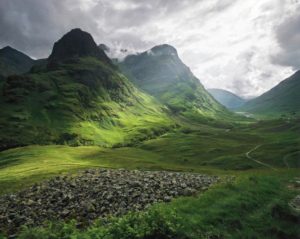
Kay and I traveled alone on the first eight days of this trip before we met up with family members and friends for the second week. We landed in Glasgow, got our rental car-I sulked while Kay programmed the GPS-and off we went toward Ft. William through the mountains of Loch Lomond. The Highlands of Scotland are stunningly beautiful. The country has a five hundred-mile, coastal and mountain route that is referred to by the Tourist Board as “the Route 66 of Scotland.” Kay and I traveled four hundred of those five hundred miles. At least a third of those four hundred miles were one-lane roads with only a “Passing Place” for vehicles to slip into to avoid smash-ups. Let me explain a “Passing Place.” In America, when not driving the Interstate/Freeway systems, we drive two-lane roads wide enough for large vehicles traveling in either direction, and with expanded lanes for those times when we find ourselves behind a slower moving vehicle and need to pass, i.e., going up a long incline. That reality does not exist on Scotland’s Route 66.
A “Passing Place” is no more than what I describe as a “blip” on the pavement for one and a half vehicles to glide into when a car approaches in the opposite direction. I say “half” because whenever two cars traveling in the same direction might need to duck into a random blip, the back end of the second vehicle invariably sticks out into the one-lane road, which makes for a tight squeeze for the other vehicle to pass. The natural features of the Highlands did not consider accommodating man-made pavement when muscling its way into existence eons ago. So the Scottish Highway Department selected these “Passing Places,” solely on the lay of the land. There appeared to be no other logical explanation. And if the timing of two or more on-coming vehicles met with no immediate “Passing Place” to swerve into, then it was the discretion of the drivers to decide who backed up to the first available “blip.” Kay did her fair share of backing up.

When we travel we rarely book a room in advance, preferring instead the freedom to find a quaint village along our way and then seek shelter. We’ve never spent a night in the car. When we came to Lochcarron, I found us the last room in The Lochcarron Inn. That night we dined in the hotel restaurant and the locals told us we must see Applecross, but warned of the dangers traveling the road beyond Ardarroch over the mountains to Applecross. That night, if it was to be our last, I kissed Kay and told her our life together had been a wonderful “ride.”

The road out of Lochcarron was a wide one-lane, but once we started up the mountains, it became a wide bicycle lane. There are over sixty types of sphincter muscles in the human body. I interject this tidbit of information so one may understand that on this highway (the most recent in the long list of H.O.D.), while traversing over the mountains to Applecross, my brain was in constant communication with all of the muscle groupings controlling internal flow preparing them for probable impact. There were the hair-pin curves, the near drop-offs into the void, and the invariable on-coming traffic between “Passing Place” signs that forced the slamming of brakes, the backing up, and the near-misses. At one moment when we approached a “Blind Summit” and were about to crash head-on into a truck, I thought the end had come. By some miracle Kay turned the potential final curtain into a very close call. Once the danger had passed, she asked sweetly, “What did your brain say to your sphincter this time?”
“Honey,” I gasped. “This happened so fast my brain did not have time to tell my sphincter to kiss my butt goodbye.”
“So your brain is no longer talking to your sphincter,” she quipped. “I know some good P.T.S.D. therapy for that.”
Spoken like a true mental health expert.
You might think I exaggerate, but during the second week of our trip when Kay drove her two older brothers (neither of whom is prone to hyperbole), around Loch Lomond, after returning to our castle, the first older brother got out of the car and raised his hands to me. “Look what your wife did to me,” he said, eyes wide in mock fear, his hands trembling as if suffering from the palsy. The second older brother said, “There was one point on this drive when I thought it was all over, and I said to myself, ‘I’ve had a good life, I’m content, and I’m ready to go.’”
It is a sad thing to see three grown men reduced to commiserating on their near-death-experiences at the hands of their sister and wife.
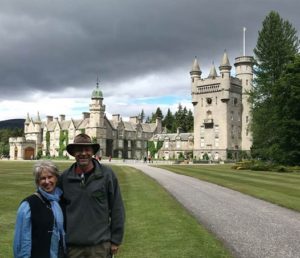
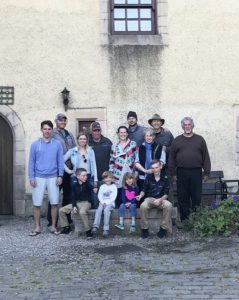
Our rental vehicle recorded 1,669 miles in just over two weeks of travel, and with the exception of a coating of dirt on the outside and food crumbs and trash on the inside, we returned our vehicle with nary a scratch. My bride still has the magic when it comes to driving though I’m positive her guardian angel gets paid overtime every time she gets behind the wheel. And if she ever did have a miscalculation and we had an unintentional “Thelma and Louise,” there is no one I’d rather go out with than the lovely Kay P. Arnold. In the past, international traffic tickets have followed my bride home after we have returned from our travels. We will see if any traffic violations will find their way to our address from “across the pond.”
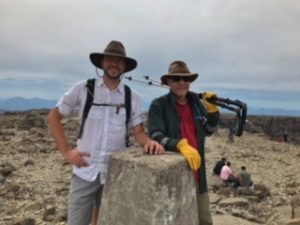
Cover Art: Road to Applecross; photo by Kay P. Arnold…taken when not driving, thank God.

